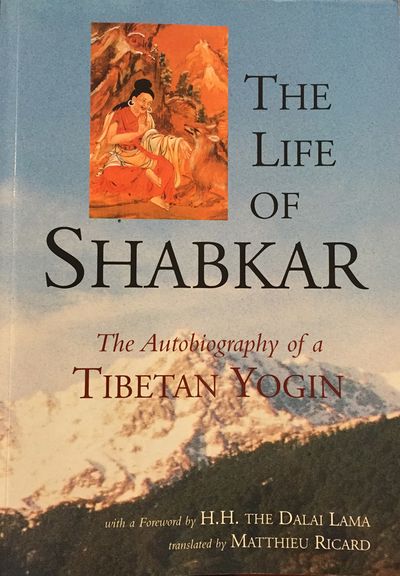No edit summary |
No edit summary |
||
| Line 39: | Line 39: | ||
* {{i|Bibliography|607}} | * {{i|Bibliography|607}} | ||
* {{i|Maps|617}} | * {{i|Maps|617}} | ||
Table of Songs, Letters, Teachings, and Major Events 625 | * {{i|Table of Songs, Letters, Teachings, and Major Events|625}} | ||
Indexes | |||
1 General index 633 | * Indexes | ||
2 Index of persons, deities, and sacred images 655 | * {{i|1 General index|633}} | ||
3 Index | * {{i|2 Index of persons, deities, and sacred images|655}} | ||
4 Index | * {{i|3 Index of places|679}} | ||
* {{i|4 Index of Tibetan works|693}} | |||
|AddRelatedTab=No | |AddRelatedTab=No | ||
}} | }} | ||
Revision as of 18:49, 7 February 2020
The Life of Shabkar has long been recognized by Tibetans as one of the masterworks of their religious heritage. Shabkar Tsogdruk Rangdrol devoted himself to many years of meditation in solitary retreat after his inspired youth and early training in the province of Amdo under the guidance of several extraordinary Buddhist masters. With determination and courage, he mastered the highest and most esoteric practices of the Tibetan tradition of the Great Perfection. He then wandered far and wide over the Himalayan region expressing his realization. Shabkar's autobiography vividly reflects the values and visionary imagery of Tibetan Buddhism, as well as the social and cultural life of early nineteenth-century Tibet. (Source: Shambhala Publications)
| Citation | Ricard, Matthieu, Jakob Leschly, Erik Schmidt, Marilyn Silverstone, and Lodrö Palmo, trans. The Life of Shabkar: The Autobiography of a Tibetan Yogin. By Shabkar Tsokdruk Rangdrol (zhabs dkar tshogs drug rang grol). Edited by Constance Wilkinson, with Michal Abrams and other members of the Padmakara Translation Group. Ithaca, NY: Snow Lion Publications, 2001. |
|---|---|



